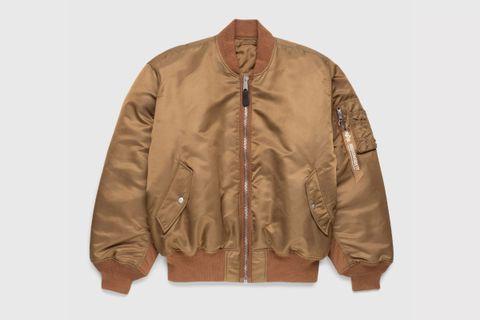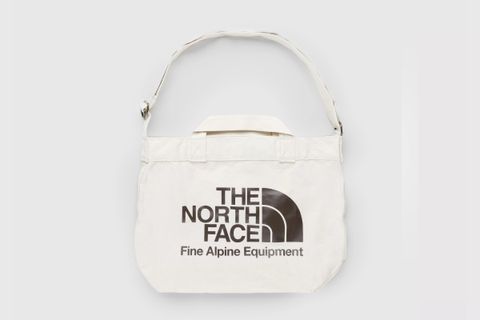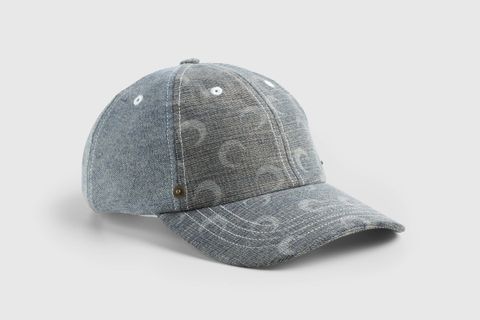Why We'll Miss Matthew Williams' Givenchy
What is the legacy of the Matthew Williams Givenchy era, which lasted from June 2020 until December 1, 2023?
You could argue that it's one of grungy all-black luxe-meets-street fare epitomized by A$AP Rocky wearing a shredded grey hoodie over a leather skirt (true). You could posit that it's the sheer star power of Williams' tenure, which brought everyone from Ethel Cain to close pal Playboi Carti into the Givenchy orbit (also true).
But I contend that the brightest spark of the Williams tenure was the way that he brought the outsiders inside. Williams' Givenchy wasn't just for the one-percent; it was for the kids who don't often get called up to work with luxury labels, for his friends, for everyone.
Matthew Williams made an earnest effort to give young up-and-comers a piece of the pie during his time at Givenchy.
Both cult artist CHITO and Williams' longtime friends at Bstroy got high-profile collaborations, for instance. Music industry figures as red-hot Lancey Foux and cultish as Carti associate Jaylan Tucker got modeling turns.
A rising tide lifts all ships but only if the ships are there in the first place; Williams gave out ships aplenty, even when it was treated almost incidentally.
Like, Givenchy's Spring/Summer 2022 collection was ostensibly a showcase for clothes created in collaboration with painter Josh Smith. However, Williams also quietly hired cult-ish DIY savant Shin Murayama to create one-off masks for the runway show.
Murayama's work was so subtly included in Williams' presentation that most publications didn't even know that it was there. But Williams did. And so did anyone who knew what to look for.
One of the fun things about Williams' time at Givenchy, actually, was that flurry of IYKYK blink-n-ya-miss-it moments.
Like, only the diehards were seeing Williams and his atelier pop up in the Instagram Stories or tagged photos of buzzy friends like Seventh Heaven founder John Ross and Destroy Lonely, a rapper signed to Carti's Opium label (truly, a friend of Carti is a friend of Williams).
Because it was never done for the 'gram. Williams is friends with these folks and he brought them in on his success.
He treated the luxury house as a luxury house, emphasizing the opulent product that he'd been hired to create, but Williams' exuberance for Givenchy was also a shared exuberance.
This was arguably best demonstrated with the sprawling social media campaign that debuted before Williams' first collection hit the runway, wherein a slew of A-listers — the Kim Kardashians, the Anne Hathaways — promoted the creative director's new Givenchy designs free of charge.
But, if it was the household names whose pro bono support formed the foundation of Williams' Givenchy, it's the indie talents that Williams nurtured who represent the most optimistic and lingering aspects of Williams' Givenchy.
For Williams' magnanimity represented a trait rarely seen in the industry: inclusion.
I won't sit here and pretend that anyone involved in fashion today has singularly solved the industry's dire lack of representation but Williams' willingness to spread the love to this extent was unusual in a business so reliant on safe bets and household names.
Frankly, it was very Virgil Abloh of Williams, to reference one of the designer's oldest friends.
It took Abloh smashing down barriers at Louis Vuitton to open the door for Matthew Williams to continue eroding barriers at Givenchy, admittedly, but to Williams' credit, he upheld a core Abloh tenet and consistently invited youth to sit at fashion's frequently stodgy table.
Williams' Givenchy reflected an organic step towards a more considerate fashion industry, one that treats rappers as creative equals, not merely deep-pocketed seat fillers at fashion shows.
Young Thug doesn't just create bespoke soundtracks for the runway of any ol' fashion house; Travis Scott doesn't show up at Cannes wearing a head-to-toe look from any other luxury maison.
And, sure, Williams frequently invites famous friends to model and rep 1017 ALYX 9SM, the luxury label he co-founded with Slam Jam's Luca Benini in 2015. But ALYX operates at a fraction of the scale of internationally recognized luxury label Givenchy.
To be clear, though, Williams didn't roll into Givenchy HQ aiming to simply bless up his pals. He was always business-first.
"The brand and the house is always bigger than the designer," Williams once told Highsnobiety. "This isn’t about me. It’s about doing the best I can for the legacy of [Givenchy]. I care about this company deeply."
Still, you'll notice that I haven't much talked about Williams' actual Givenchy clothes much at all. It's not because the clothes were necessarily bad or even lesser than anything else Williams did — I think anyone would agree that his menswear collections got stronger every season and he was becoming more and more capable of delivering hit accessories, like the surprisingly viral Shark Boots.
But Williams' legacy at Givenchy isn't about the clothes. Really — and brands are loathe to admit this — very little in fashion is actually about the clothes. It's about vibes, it's about quarterly reports, it's about splashy launches with open bars and finger food.
Matthew Williams' Givenchy was about the people. The people he thoughtfully invited into his world, both in front of and behind the scenes, epitomize what his time at the house really stood for: a human element so rare in fashion that we only know to miss it when it's gone.


